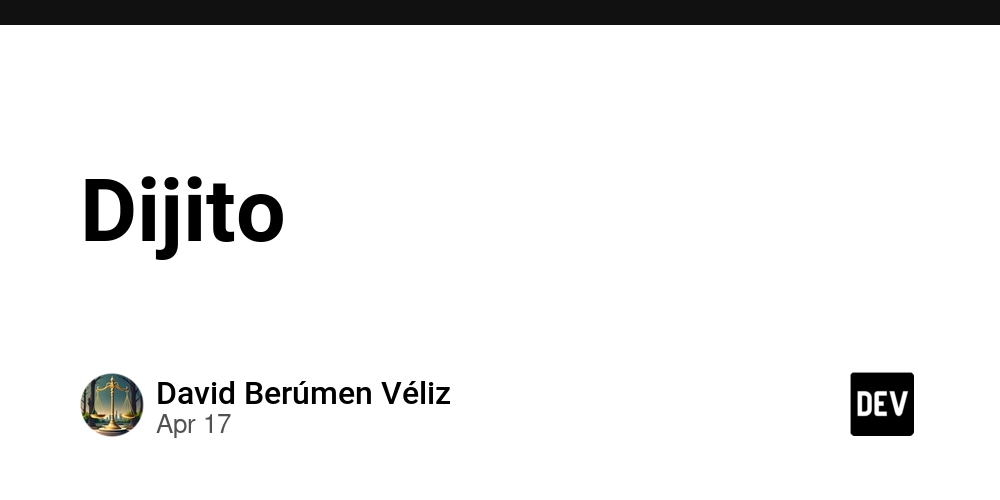Data Integration Process: A Comprehensive Guide
The data integration process has become a critical component of modern business operations, enabling organizations to unify and streamline data from multiple sources into a cohesive, usable format. While implementing data integration from scratch can be overwhelming, various automated tools and methodologies have emerged to simplify this complex task. Organizations must carefully evaluate different architectural approaches, tool capabilities, and potential limitations when designing their integration strategy. This comprehensive guide examines the core techniques of data integration, provides guidance for selecting appropriate tools, and outlines best practices for implementing efficient, low-code solutions in today's data-driven environment. Core Concepts in Data Integration ETL (Extract, Transform, Load) At the foundation of data integration lies ETL, a systematic approach that pulls information from various sources, refines it, and places it into a centralized repository. This method ensures data consistency and quality before it reaches its final destination, whether that's a data warehouse, lake, or specialized system. ELT (Extract, Load, Transform) Modern cloud computing has given rise to ELT, where raw data moves directly into storage systems before transformation. This approach leverages the powerful computing capabilities of modern data warehouses, offering greater flexibility in how and when data gets processed. Reverse ETL This newer methodology takes processed data from warehouses and pushes it back to operational systems. It enables business teams to utilize refined data in their daily tools, from customer relationship management platforms to marketing automation systems. Change Data Capture This efficient technique monitors and captures database modifications in real-time, transmitting only the changed data to target systems. It minimizes system load while maintaining data currency across platforms. API Integration Modern applications rely heavily on API integration to connect different services and data sources. This approach creates seamless data flows between systems through standardized interfaces, enabling real-time data exchange and processing. Data Virtualization Rather than physically moving data, virtualization creates a unified view across multiple data sources. It allows organizations to query diverse data systems simultaneously, providing real-time access without the need for data replication or movement. This approach is particularly valuable when working with distributed systems or when immediate access to current data is crucial. Strategic Value of Data Integration Creating a Single Source of Truth Modern enterprises require consolidated data views to function effectively. By merging information from multiple sources, organizations eliminate data discrepancies and create a unified platform where all stakeholders access the same information. This consolidation ensures consistency across departments, reduces errors, and builds trust in organizational data assets. Empowering Executive Decision Making Integrated data systems provide leadership teams with comprehensive insights necessary for strategic planning. When executives can access unified dashboards showing cross-departmental metrics, they can identify emerging patterns, understand market dynamics, and respond to challenges proactively. This capability transforms decision-making from reactive to predictive, enabling organizations to stay ahead of market changes and competitive pressures. Operational Excellence Through Data Synchronization Seamless data integration enables sophisticated operational capabilities, from advanced analytics to machine learning implementations. When systems share data efficiently, organizations can deploy predictive maintenance programs, optimize supply chains, and create personalized customer experiences. This operational enhancement leads to improved efficiency, reduced costs, and better service delivery across all business functions. Supporting Advanced AI Applications The emergence of generative AI and sophisticated analytics has made robust data integration more crucial than ever. Organizations now require integrated data systems to power vector databases, support retrieval-augmented generation (RAG), and enable AI model training. Effective data integration ensures that AI systems have access to current, relevant information, maximizing the value of these advanced technologies. Real-time Analytics Capabilities Modern business environments demand instant access to accurate data. Integrated data systems provide the foundation for real-time analytics, enabling organizations to monitor performance metrics, track customer behavior, and adjust strategies immediately. This capability is particularly valuable in fast-moving industries where quick react

The data integration process has become a critical component of modern business operations, enabling organizations to unify and streamline data from multiple sources into a cohesive, usable format. While implementing data integration from scratch can be overwhelming, various automated tools and methodologies have emerged to simplify this complex task. Organizations must carefully evaluate different architectural approaches, tool capabilities, and potential limitations when designing their integration strategy. This comprehensive guide examines the core techniques of data integration, provides guidance for selecting appropriate tools, and outlines best practices for implementing efficient, low-code solutions in today's data-driven environment.
Core Concepts in Data Integration
ETL (Extract, Transform, Load)
At the foundation of data integration lies ETL, a systematic approach that pulls information from various sources, refines it, and places it into a centralized repository. This method ensures data consistency and quality before it reaches its final destination, whether that's a data warehouse, lake, or specialized system.
ELT (Extract, Load, Transform)
Modern cloud computing has given rise to ELT, where raw data moves directly into storage systems before transformation. This approach leverages the powerful computing capabilities of modern data warehouses, offering greater flexibility in how and when data gets processed.
Reverse ETL
This newer methodology takes processed data from warehouses and pushes it back to operational systems. It enables business teams to utilize refined data in their daily tools, from customer relationship management platforms to marketing automation systems.
Change Data Capture
This efficient technique monitors and captures database modifications in real-time, transmitting only the changed data to target systems. It minimizes system load while maintaining data currency across platforms.
API Integration
Modern applications rely heavily on API integration to connect different services and data sources. This approach creates seamless data flows between systems through standardized interfaces, enabling real-time data exchange and processing.
Data Virtualization
Rather than physically moving data, virtualization creates a unified view across multiple data sources. It allows organizations to query diverse data systems simultaneously, providing real-time access without the need for data replication or movement. This approach is particularly valuable when working with distributed systems or when immediate access to current data is crucial.
Strategic Value of Data Integration
Creating a Single Source of Truth
Modern enterprises require consolidated data views to function effectively. By merging information from multiple sources, organizations eliminate data discrepancies and create a unified platform where all stakeholders access the same information. This consolidation ensures consistency across departments, reduces errors, and builds trust in organizational data assets.
Empowering Executive Decision Making
Integrated data systems provide leadership teams with comprehensive insights necessary for strategic planning. When executives can access unified dashboards showing cross-departmental metrics, they can identify emerging patterns, understand market dynamics, and respond to challenges proactively. This capability transforms decision-making from reactive to predictive, enabling organizations to stay ahead of market changes and competitive pressures.
Operational Excellence Through Data Synchronization
Seamless data integration enables sophisticated operational capabilities, from advanced analytics to machine learning implementations. When systems share data efficiently, organizations can deploy predictive maintenance programs, optimize supply chains, and create personalized customer experiences. This operational enhancement leads to improved efficiency, reduced costs, and better service delivery across all business functions.
Supporting Advanced AI Applications
The emergence of generative AI and sophisticated analytics has made robust data integration more crucial than ever. Organizations now require integrated data systems to power vector databases, support retrieval-augmented generation (RAG), and enable AI model training. Effective data integration ensures that AI systems have access to current, relevant information, maximizing the value of these advanced technologies.
Real-time Analytics Capabilities
Modern business environments demand instant access to accurate data. Integrated data systems provide the foundation for real-time analytics, enabling organizations to monitor performance metrics, track customer behavior, and adjust strategies immediately. This capability is particularly valuable in fast-moving industries where quick reactions to changing conditions can provide competitive advantages.
Implementation Approaches to Data Integration
Traditional ETL Methods
The Extract, Transform, Load methodology represents a foundational approach to data integration. In this process, organizations first collect data from diverse sources, including databases, applications, and file systems. The data then undergoes thorough transformation, where it's cleaned, standardized, and formatted according to specific requirements. Finally, the processed data moves into a centralized repository such as a data warehouse. Popular tools like Informatica, Talend, and Microsoft's Integration Services facilitate this process, ensuring data quality and consistency throughout the pipeline.
ETL in Practice
Consider a retail business integrating its operations data. The system pulls information from multiple touchpoints - e-commerce platforms, point-of-sale systems, and inventory databases. Using platforms like Databricks, this data undergoes enrichment and aggregation before loading into cloud solutions such as Snowflake or Amazon Redshift. Business intelligence tools then create actionable insights through visualization platforms like Tableau or Power BI.
Modern ELT Solutions
The Extract, Load, Transform approach has gained prominence with the rise of cloud computing. This method prioritizes speed by moving raw data directly into storage systems, leveraging the computing power of modern data warehouses for transformation. ELT proves particularly effective when handling large volumes of unstructured data or when rapid data availability takes precedence over immediate transformation.
ELT Implementation Example
An e-commerce platform demonstrates ELT's effectiveness by using tools like Nexla to extract raw transaction data from Shopify. This data moves directly into Snowflake without preliminary processing. Once stored, SQL transformations clean and structure the data, enabling sophisticated analysis. The transformed data then powers recommendation engines and analytics dashboards, providing valuable insights into customer behavior and sales patterns.
Choosing Between Approaches
The decision between ETL and ELT depends on specific organizational needs. ETL suits scenarios requiring strict data governance and quality control before storage. ELT offers advantages in cloud environments where storage is abundant and computing resources can scale on demand. Both approaches continue to evolve with technological advancements, offering organizations flexible options for their data integration needs.
Conclusion
Effective data integration stands as a cornerstone of successful digital operations in today's business landscape. Organizations must carefully evaluate their specific needs, technical capabilities, and business objectives when selecting and implementing data integration solutions. Whether choosing traditional ETL methods for controlled data processing or modern ELT approaches for cloud-based flexibility, the key lies in creating a sustainable, scalable integration strategy.
Success in data integration requires more than just selecting the right tools - it demands a clear understanding of data sources, quality requirements, and end-user needs. Organizations should focus on building automated, maintainable systems that can adapt to changing business requirements and growing data volumes. The rise of artificial intelligence and real-time analytics further emphasizes the need for robust, reliable data integration processes.
As technology continues to evolve, data integration methodologies will undoubtedly advance, offering new opportunities for efficiency and innovation. Organizations that establish strong data integration foundations today position themselves to leverage future technological developments, maintain competitive advantages, and drive data-informed decision-making across all operational levels. The investment in proper data integration infrastructure pays dividends through improved operational efficiency, better decision-making capabilities, and enhanced ability to adapt to market changes.












































































































































































![[The AI Show Episode 144]: ChatGPT’s New Memory, Shopify CEO’s Leaked “AI First” Memo, Google Cloud Next Releases, o3 and o4-mini Coming Soon & Llama 4’s Rocky Launch](https://www.marketingaiinstitute.com/hubfs/ep%20144%20cover.png)









































































































































































































![GrandChase tier list of the best characters available [April 2025]](https://media.pocketgamer.com/artwork/na-33057-1637756796/grandchase-ios-android-3rd-anniversary.jpg?#)






































































.webp?#)






























































































![Here’s everything new in Android 16 Beta 4 [Gallery]](https://i0.wp.com/9to5google.com/wp-content/uploads/sites/4/2024/11/Android-16-logo-top-down.jpg?resize=1200%2C628&quality=82&strip=all&ssl=1)











![New Beats USB-C Charging Cables Now Available on Amazon [Video]](https://www.iclarified.com/images/news/97060/97060/97060-640.jpg)

![Apple M4 13-inch iPad Pro On Sale for $200 Off [Deal]](https://www.iclarified.com/images/news/97056/97056/97056-640.jpg)





































































































































